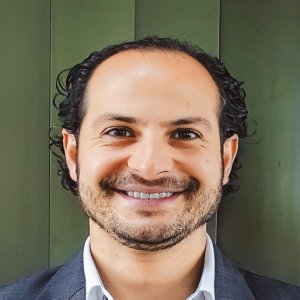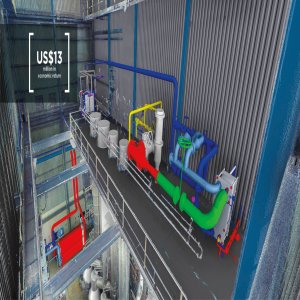Energy Efficiency Equals Clean Generation

STORY INLINE POST
Q: How does the company work toward energy efficiency and what is your methodology when approaching projects?
A: We carry out energy efficiency studies; what is not measured cannot be improved. Energy solutions should not be implemented just because they are fashionable. Each client has a particular opportunity to address and a solution to its problem. The energy efficiency solution for a hospital is highly unlikely to work for industrial users. Our methodology when approaching every project starts with a deep study of their operations and their energy consumption, analyzing each of their internal consumers to map an energy-mass balance that determines points of improvement.
In the case of the pharmaceutical sector, for example, we provide help with steam and hydraulic energy balances. We first tackle the basic heat needed to produce electric energy, targeting a balance between fossil fuels and electric energy consumption in the network. In this cogeneration, we propose the use of Jenbacher engines, an electric energy generator that works with the gases produced autonomously through an industrial process. It is a system of heat recovery that warms water and produces steam energy. This is an interesting infrastructure investment for the client as it allows it to capitalize on the heat and better benefit from all resources. Cogeneration processes are applicable to every industry or process that needs to generate heat and electric energy.
Q: What would be your advice for clients seeking to implement an efficient photovoltaic system?
A: Photovoltaic processes are as good as cogeneration because they promote the better use of resources while adding to the generation of clean energy. We deploy these processes particularly for residential projects. But the benefits of solar energy can only be achieved after a previous study that considers the infrastructure investment to be made in the panel. If the customer has not revised its energy system and consumption before implementing a PV model, the old failures in it will be patched but will prevail underneath. We recommend the electricity network be reviewed before building the PV installation. In the end, the idea is to make energy consumption as efficient as possible, regardless of whether it comes from a renewable source or fossil fuels.
Q: What is your assessment of the regulatory framework for energy in Mexico?
A: Mexico’s regulatory framework lagged in promoting higher efficiency for many years, unlike the regulations in Europe and Asia, which have addressed this topic since the end of World War II. There has been great awareness internationally about the importance of energy efficiency since the 1980s and Mexico is just joining the party. While we arrived late, I think the country is on a positive path in providing maturity to its framework. In short, I believe that Mexico has developed a very good consciousness regarding energy matters and we are more than ready to jump into energy savings and renewable sources. The goal is not merely to build wind farms or install solar panels but to only use the exact amount of energy that we need.
Q: What is your main added value regarding watermanagement operations?
A: We were founded in 2010 and work across multiple sectors, including energy, water management, environment and health. The water sector is mainly dominated by the public sector with a segmented participation of private companies and only in certain states. This private contribution is always heavily regulated by the government. In this scenario, we work specifically on the recovery of flows, compartmentalization of network management, optimization of pumping systems, process automation, remote monitoring and micro and macro measurement. The company offers a wide variety of solutions for water management. Our goal is for processes and projects to be capitalized in a sustainable way. We also contribute to water treatment processes and compliance with SEMARNAT’s water quality regulations, seeking the lowest environmental impact.
























